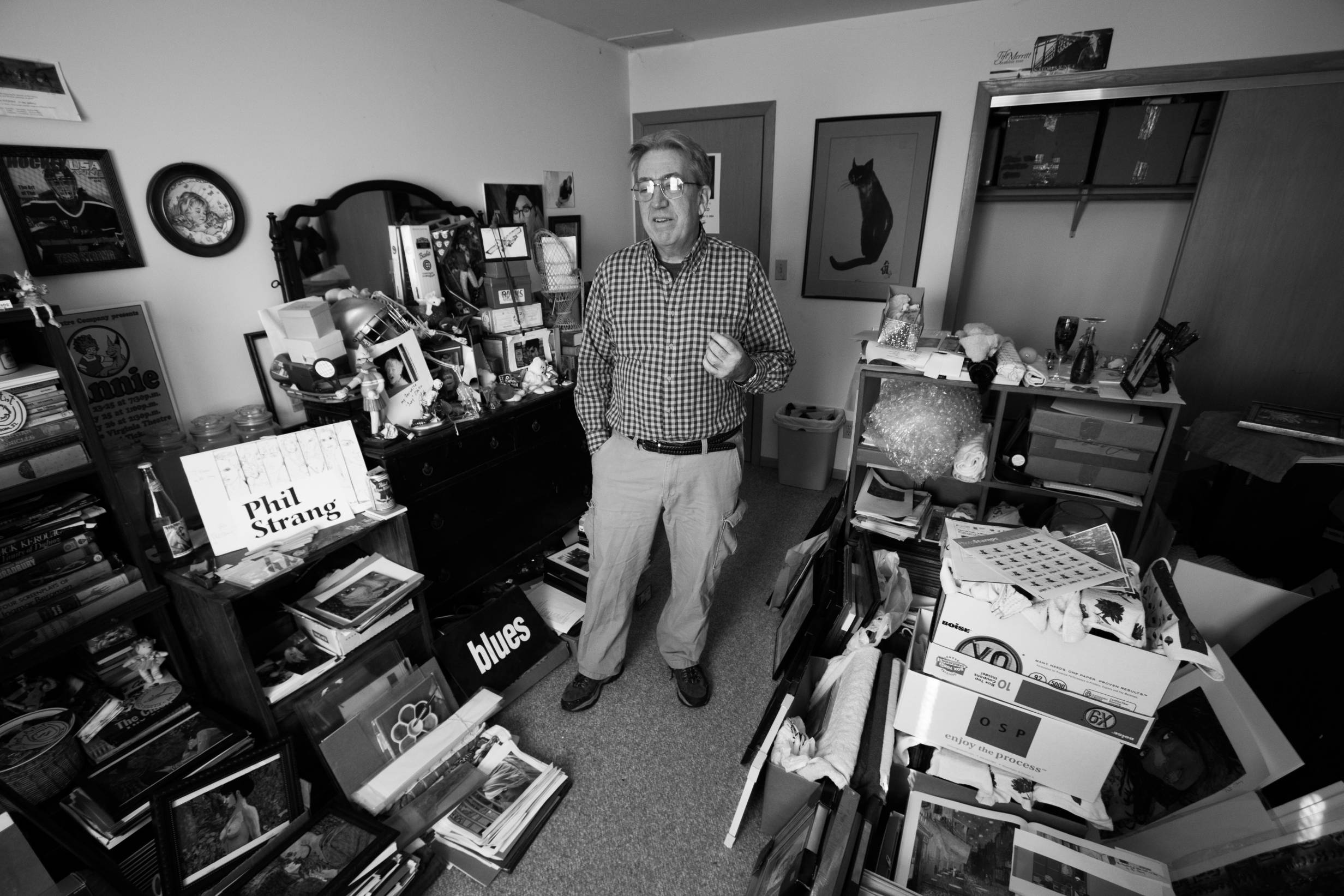Phil Strang is now a pretty well-known artist around Champaign-Urbana, but his roots stretch all the way back to New York City. He was born there and spent his first 17 years as a New Yorker before moving to Champaign-Urbana for school. His father was a big band and opera musician who double majored in trombone and voice at the University of Illinois.
Ever the artist, Strang’s first painting was a mural of Romeo and Juliet.
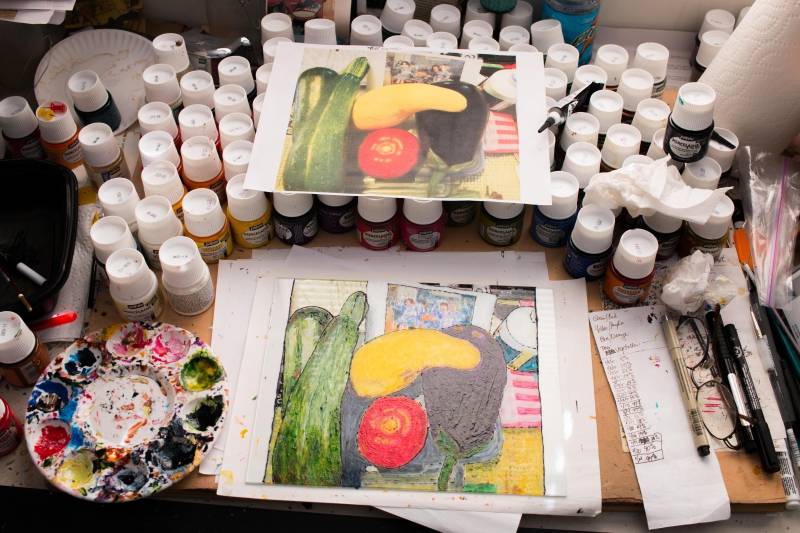
He attended the U of I, studying the arts and Psychology. While still in school, he and some friends started Record Service, a name you might recognize. That particular institution was still on campus when I was a kid, and it is still spoken of fondly by townies. Strang did the advertising for Record Service, starting out as a $25-a-week volunteer. He was eventually hired on as Record Service took off.
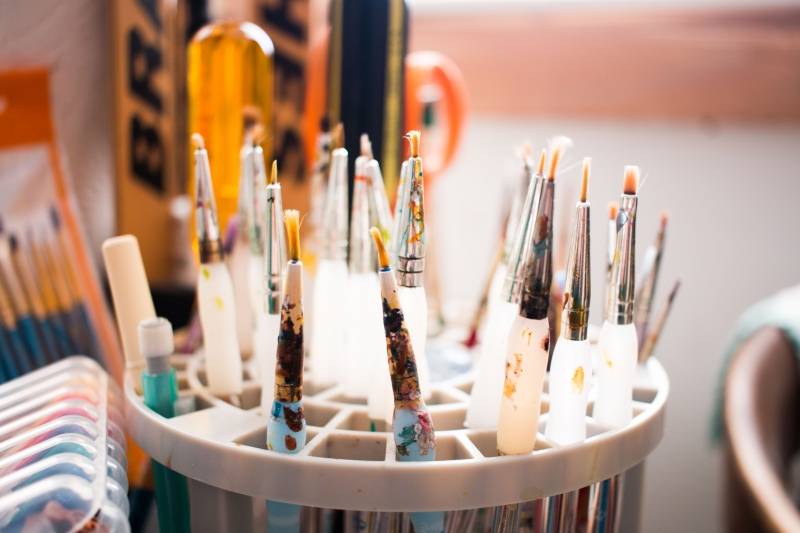
After he graduated, Strang stayed on with Record Service until its locations eventually closed down, leaving behind the building which Sushi Rock and some other restaurants now occupy.
You might be wondering, How does this connect with painting?
Well, aside from getting a start in art and design from the experience he gained heading up the advertising for Record Service, Strang also took the glass panes from the business when it closed down, thinking, “I could paint something on this.”
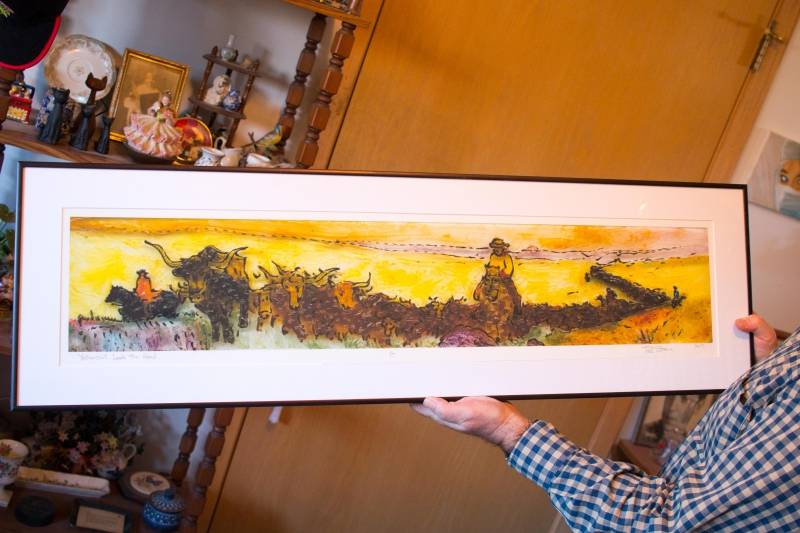
He took the glass pieces to the Art Coop, which was on campus at the time, and found paints called PEBEO which would paint on glass. Since then he has been painting on glass and making beautiful pieces of art for Champaign-Urbana to enjoy. This leads me into the next interesting point about Phil: a lot of his art is enjoyed not only by the people of Champaign-Urbana, but also by people all over the world.
How is this? Well, have you ever heard of an online community called Second Life..?
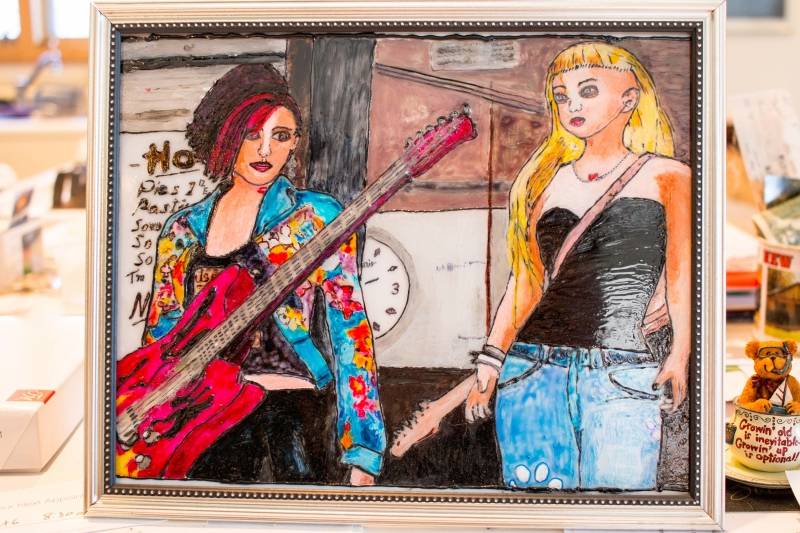
In Strang’s words, Second Life is sort of like Sim City. You create an avatar and then allow your character to interact with other avatars in a virtual world. In this world, people sometimes ask Strang to paint their portraits. So, Phil takes their avatar picture, often in the setting of a Second Life scene, and he paints their portrait on glass. He then takes the painting to Dixon graphics, a local printing company, where he makes digital scans of the glass paintings, and then he sells the prints. He also provides a copy of the file to the Second Life customer so they post that digital file in Second Life as a painting on their digital wall. So many of Strang’s portraits are hanging in a virtual world in Second Life.
Below: a portrait of a famous artist amongst Second Life users. This is the avatar. The user that controls this avatar is actually a 40-year-old white male.
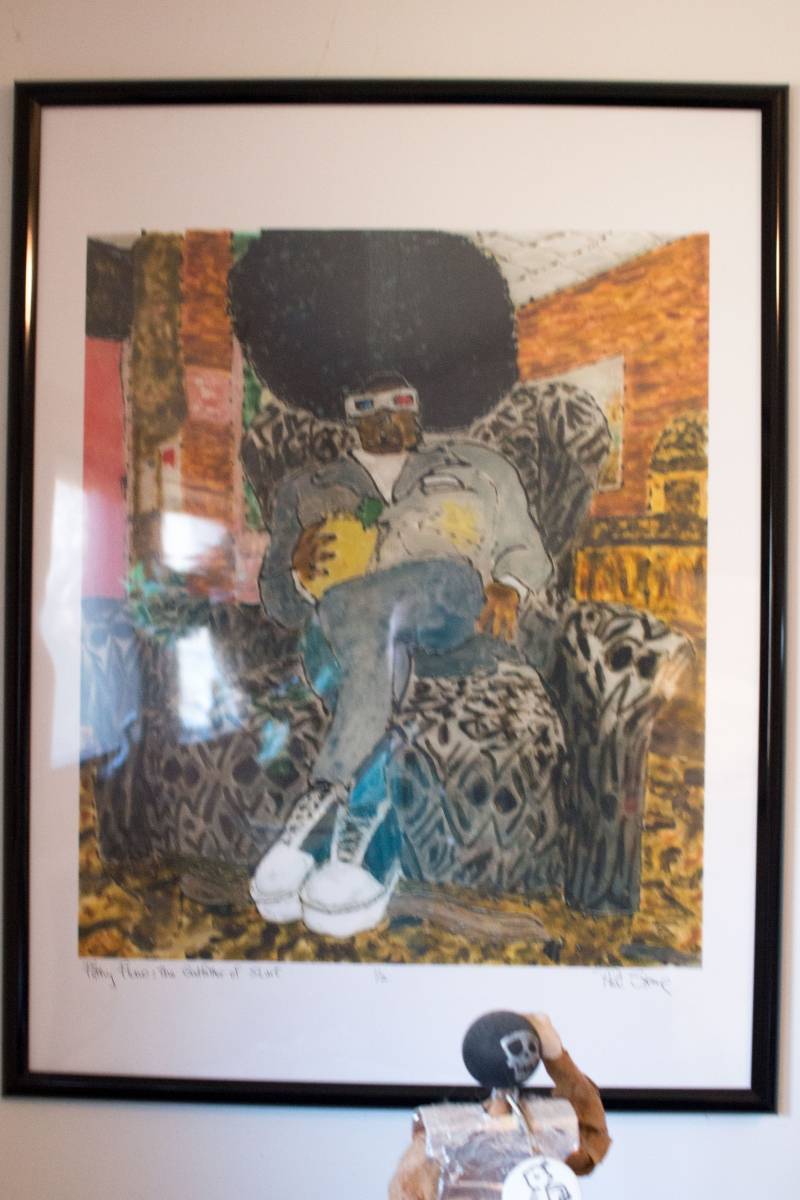
Below: what the artist (from above) sent Phil in return for his portrait painting
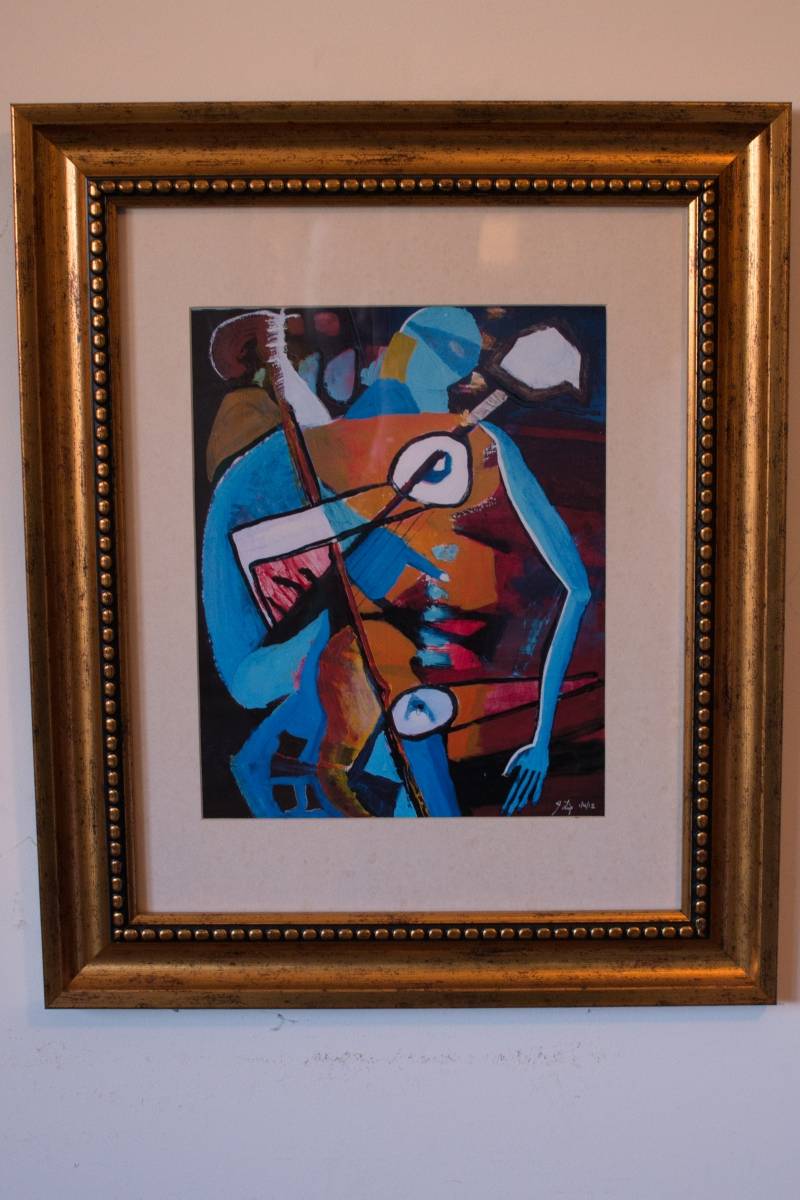
Strang says that he likes painting portraits because it allows him to get to know someone and then make a piece of art that represents who they are. He says that using Second Life helps him to understand more about a person by watching their avatar—perhaps more than he could know about a real person. This is because he can watch an avatar but he cannot follow you around in your life.
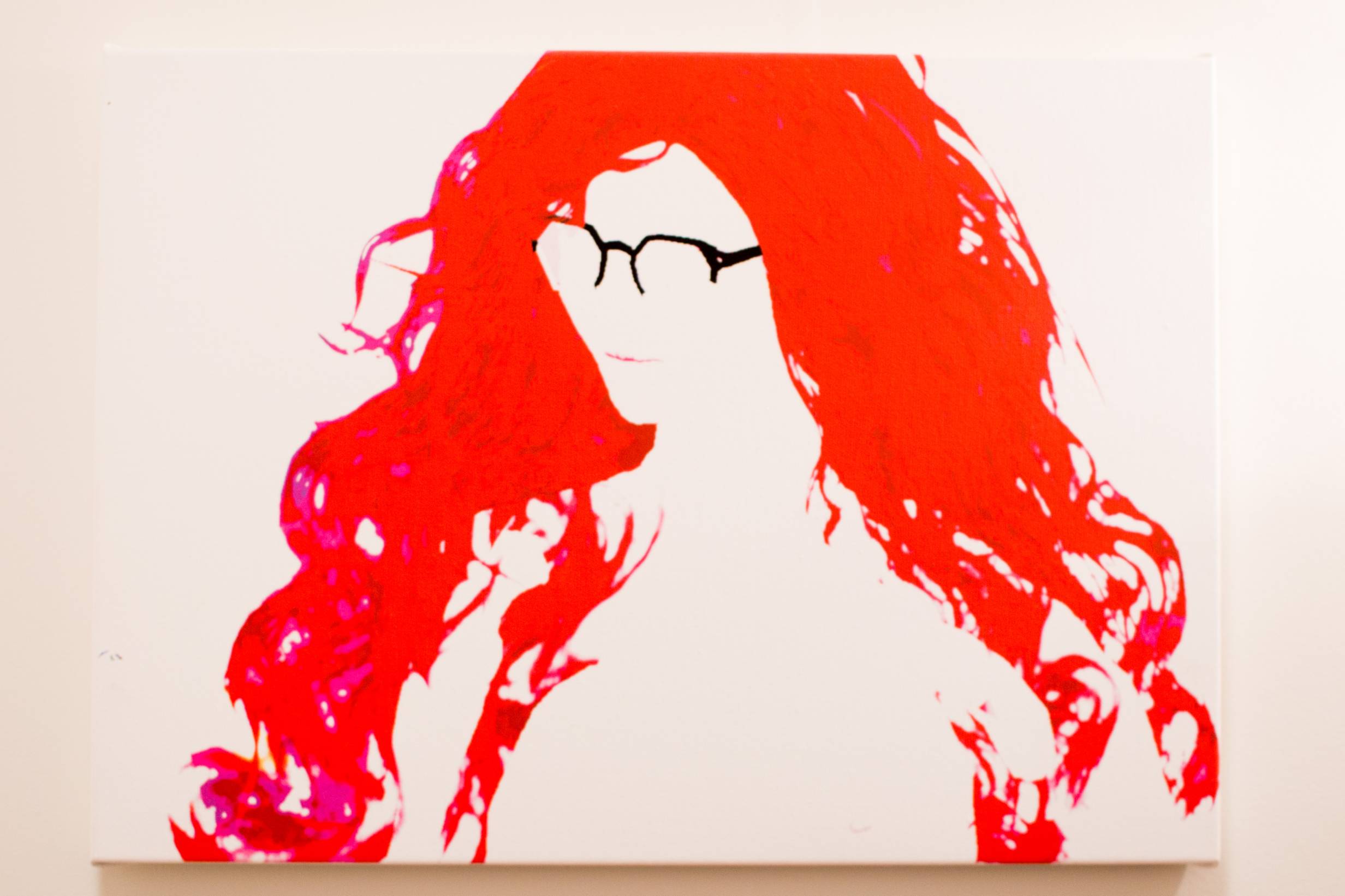
Aside from portraits, Strang also experiments with other types of art. He has been doing what he calls splatter painting and also “splips,” which are a combination of splattering and dripping. He teaches a class, during warm weather, on splattering. He says that it is not random, as many people might think. He encourages students to pick a word, a saying, a thought and to focus on expressing that in the splatters. The classes are $50, and he can take on 1 to 2 people at a time.
Below: an example of a splatter painting.
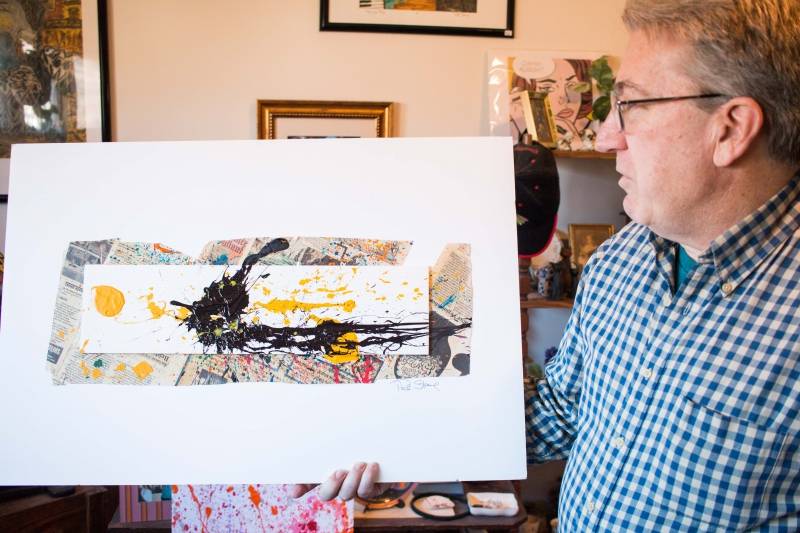
The work below is another interesting form of art that Strang has been experimenting with. He says that he takes extremely thick paint and sculpts with it on the canvas. It takes days to dry, he says.
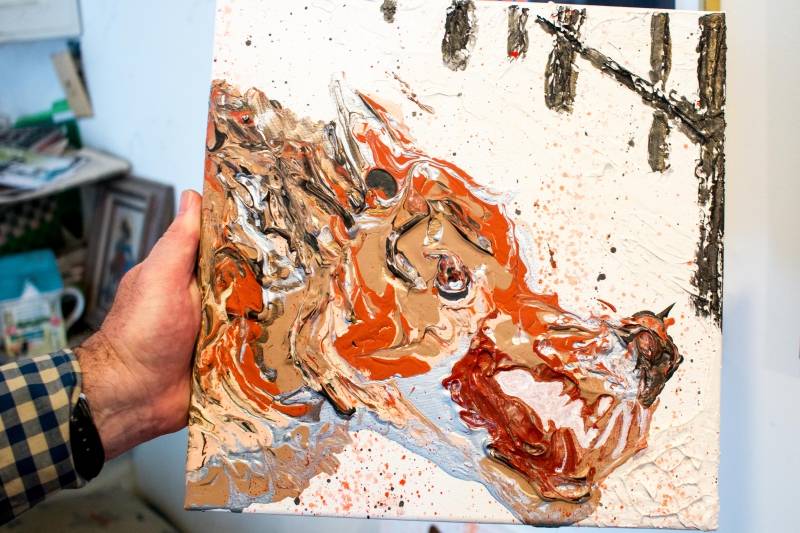
He takes a lot of his artwork and uploads it to Fine Art America’s website. He then makes greeting cards out of a lot of the artwork (as seen below). “People like these because they can have a piece of my art for a low cost,” Strang says.

I also talked to Strang about what he thinks of the state of art in Champaign-Urbana.
He says there is no lack of artists in C-U, but that there’s little respect for them. He says people think, “It can’t be good if it’s local.”
Accordng to Strang, people go to larger cities and more expensive galleries because they need to be told what is good art and what isn’t. Galleries have curators that pick and choose art to be in the gallery. Meanwhile, we only have one gallery here in town, the Cinema, in Urbana. Strang says more galleries with experienced curators would improve the state of art in Champaign-Urbana.
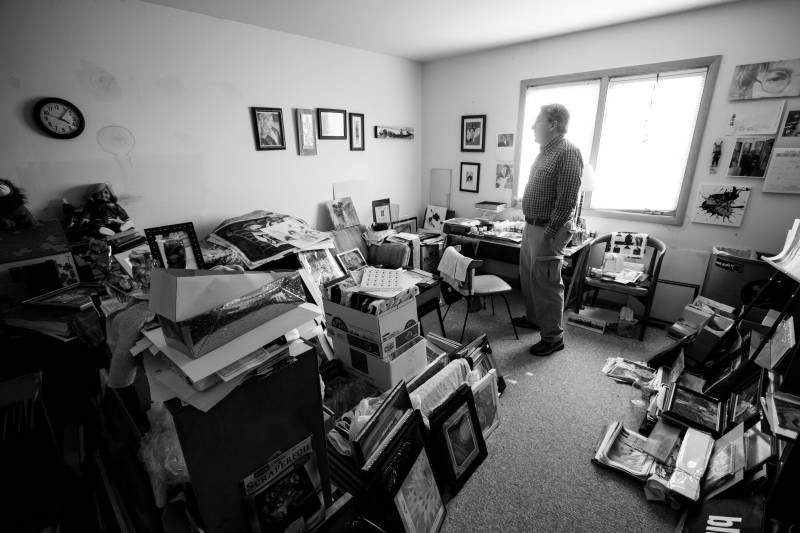
“But what about Indi Go?” I asked. “What about the University?”
“Indi Go is great,” says Strang, “but anyone can put their art in Indi Go. That is great for artists, but it lacks a curator who can pick great work to put up in the gallery.” As for the University, “It brings in fantastic artists, but that is about it. Krannert is mostly a museum. People don’t buy art from Krannert.”
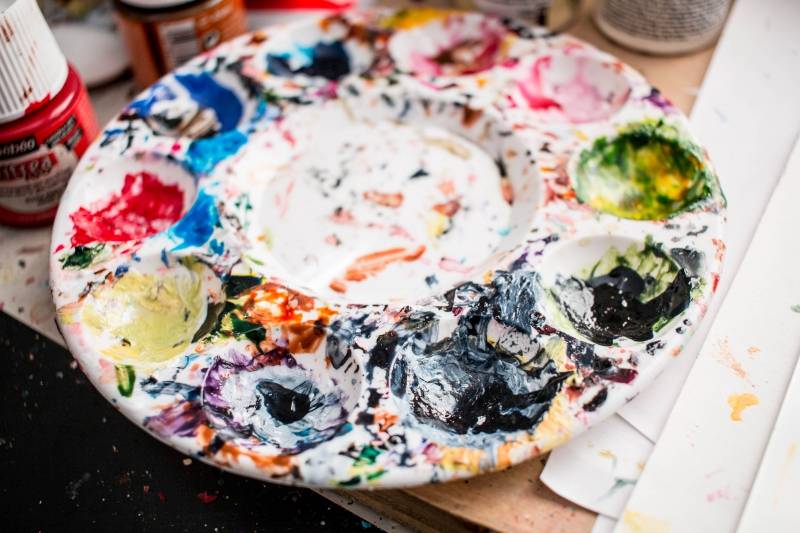
That is not to say that Strang thinks local art (or artists) are worth less than “outside” art; in fact, he feels quite the opposite. He thinks artists are doing top-quality work and should think of themselves that way. “Don’t undersell yourself,” Strang says. “You are worth double what you are probably charging as an artist.”
Below: Phil’s dog, Maddie, who greeted me hesitantly but grew comfortable with me by the end of my visit

It was really cool to meet Strang and talk with him. What’s particularly inspiring is that he is constantly taking the tools that he uses to create art and mashing them up in different ways. He encourages artists to create art using tools and mediums in new way, to find something they are passionate about and not get discouraged when their piece doesn’t turn out like it they thought it would. He says, “Work at something, and then work at it some more, and then work at it some more. And if it’s not right, work at it some more. But don’t be discouraged when it doesn’t turn out.”
You can find Phil Strang’s work on his Facebook page, or at Fine Art America, Beads and Botanicals, International Galleries, and the Institute 4 Creativity.








